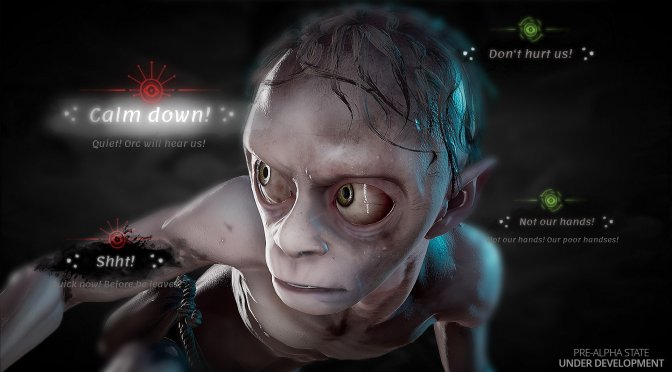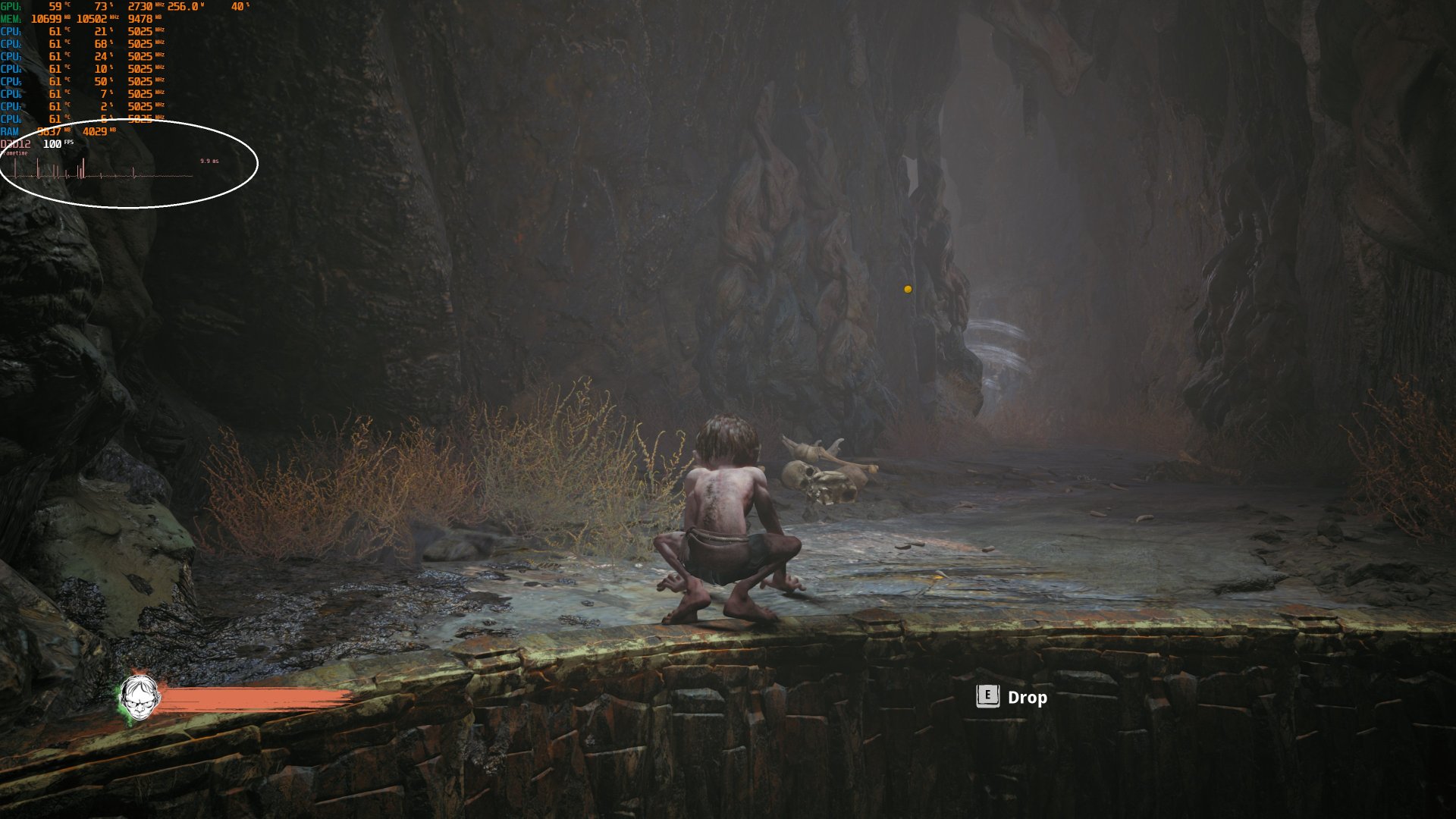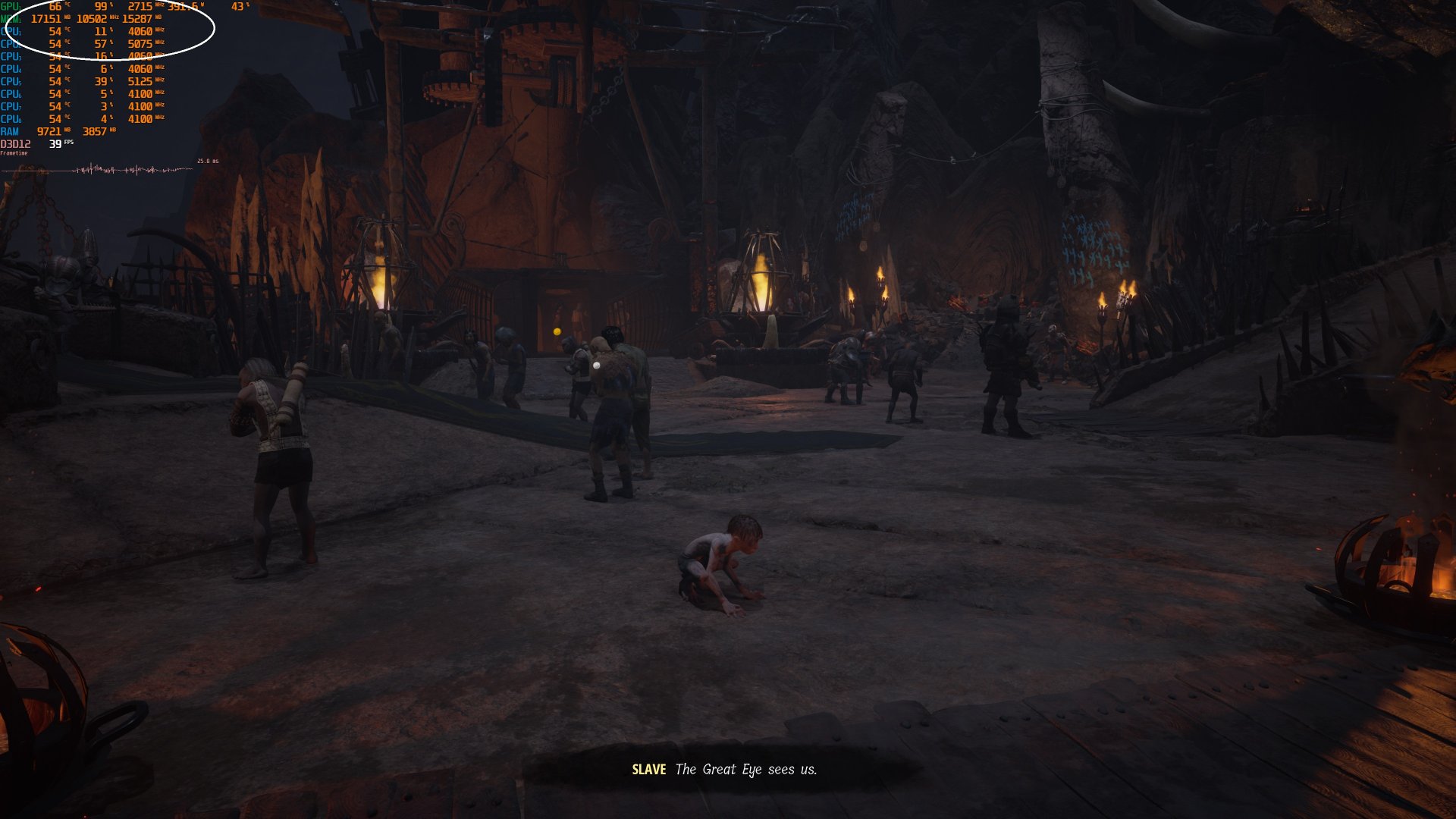Daedalic Entertainment has released The Lord of the Rings: Gollum on PC, and things are not looking particularly well. Unfortunately, this is another Unreal Engine 4 game that suffers from major stuttering issues on PC. Not only that, but The Lord of the Rings: Gollum has insane VRAM requirements in 4K.
For our initial tests, we used an AMD Ryzen 9 7950X3D, 32GB of DDR5 at 6000Mhz, and NVIDIA’s RTX 4090. We also used Windows 10 64-bit, and the GeForce 532.03 WHQL driver.
Upon launching the game, there isn’t any shader compilation procedure. Thus, the game appears to be suffering from both shader compilation and traversal stutters. Even when simply moving the camera you can get stutters. Below you can find a screenshot that showcases these stutters. Pay attention to our frametime graph which perfectly shows the stutters.
It’s also worth noting that the game only uses two CPU cores/threads. However, even with Ray Tracing, we were GPU-bound, and we did not witness any CPU limitation/bottleneck. The two main CPU threads were not maxed out, so in theory, even those with older CPUs will be able to run the game.
As the title suggests, though, the game has some insane VRAM requirements, especially when gaming at 4K/Epic Settings. With Texture Streaming On and without Ray Tracing, the game could use 14-15GB of VRAM. By enabling Ray Tracing, the game’s VRAM requirements increased to 16-18GB.
Now when you disable Texture Streaming, things get even worse. By disabling it, you may be able to avoid any low-res textures as the game will load most textures to your GPU’s VRAM. Without Ray Tracing at 4K/Epic, the game can use between 16-19GB of VRAM. With Ray Tracing, we saw the game using between 20-22GB of VRAM.
Since Texture Streaming can significantly reduce VRAM usage, we suggest keeping this setting enabled at all times. Still, and even with it, owners of GPUs with less than 16GB of VRAM will have trouble running the game at Native 4K/Epic Settings.
For those wondering, DLSS 3 Frame Generation WILL NOT decrease your VRAM usage as the game is still rendered at native 4K. So, if you are VRAM-limited, you won’t see any performance benefits at all from DLSS 3 Frame Generation. The solution here is to use DLSS 3 Super Resolution. By rendering the game at a lower internal resolution, you can decrease your overall VRAM usage. Common sense, right? Then, and only then, should you use DLSS 3 Frame Generation. So once you’ve eliminated your VRAM bottlenecks, DLSS 3 Frame Generation will improve your overall performance. Again, common sense.
We’ll have more to say about The Lord of the Rings: Gollum in our upcoming PC Performance Analysis article. As said, the game can use a lot of VRAM, especially in 4K, so make sure to monitor it via tools like Rivatunner.
Stay tuned for more!

John is the founder and Editor in Chief at DSOGaming. He is a PC gaming fan and highly supports the modding and indie communities. Before creating DSOGaming, John worked on numerous gaming websites. While he is a die-hard PC gamer, his gaming roots can be found on consoles. John loved – and still does – the 16-bit consoles, and considers SNES to be one of the best consoles. Still, the PC platform won him over consoles. That was mainly due to 3DFX and its iconic dedicated 3D accelerator graphics card, Voodoo 2. John has also written a higher degree thesis on the “The Evolution of PC graphics cards.”
Contact: Email



